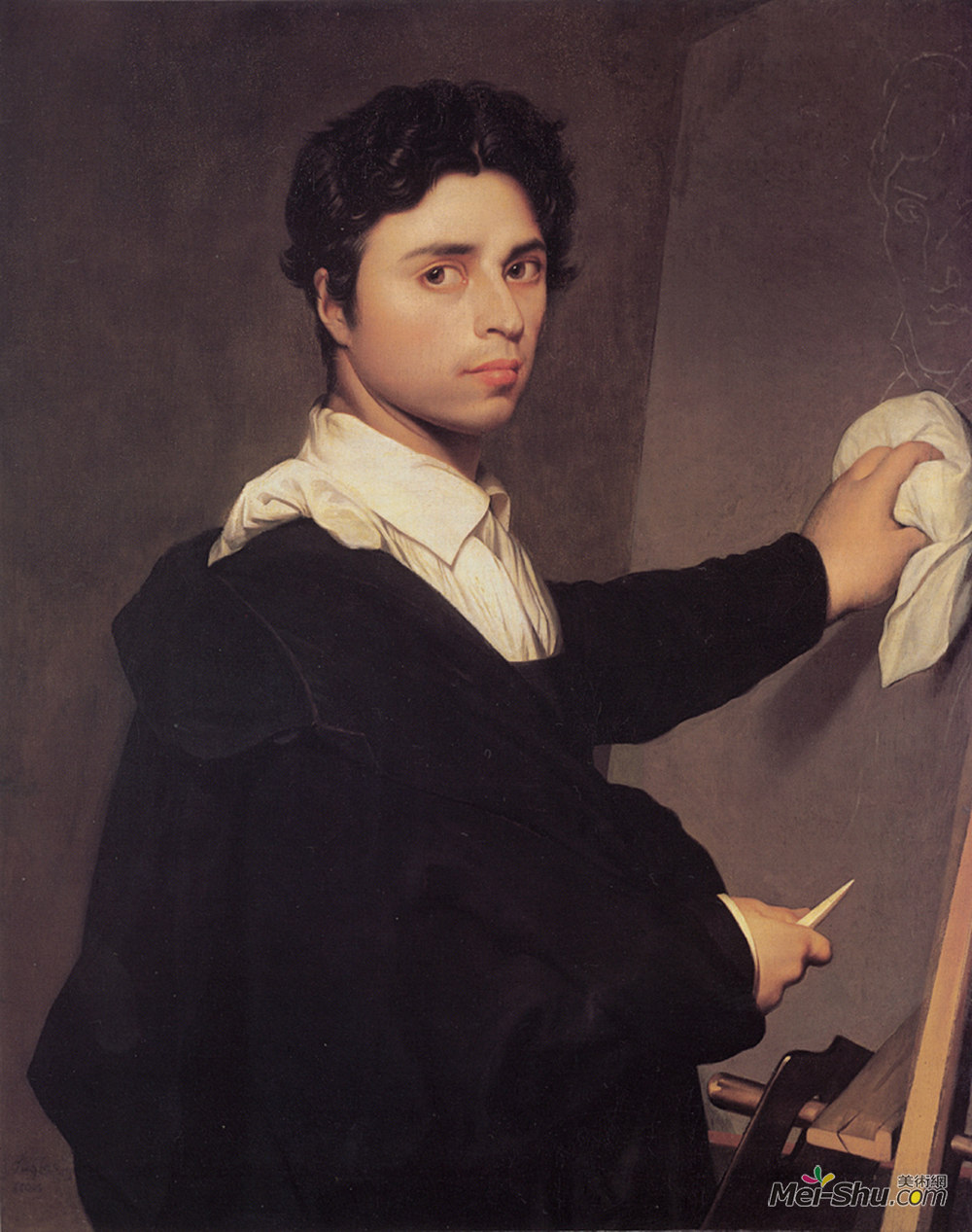
让·奥古斯特·多米尼克·安格尔(Jean Auguste Dominique Ingres)
艺术家: 让·奥古斯特·多米尼克·安格尔
生于: 1780年8月29日;蒙托邦,湖,河,法国
卒于: 1867年1月14日;法国巴黎
国籍: 法国
流派: 新古典主义
领域: 绘画,绘画
受影响: 尼古拉斯·普桑
影响: Tamara de Lempicka,Mark Ryden,保罗·高更,埃德加·德加,皮耶尔·奥古斯特·雷诺阿
老师: 雅克-路易·大卫
机构: 美术学院、法国巴黎美术学院,巴黎,法国
Jeang-IgRes是法国新古典主义画家,他认为自己是法国学术正统派的保护者,并反对浪漫主义的日益盛行。他还认为浪漫主义运动的领袖,Eugene Delacroix,他的艺术复仇女神。也许他对古典绘画风格的强烈保护与他早期教育的终结有关。11岁时,法国大革命开始了,破坏了他传统的童年,这成为了不安全的常态。作为一名初露头角的艺术家,英格里斯能够观察许多比利时、荷兰和西班牙的著名艺术品,这些艺术品在拿破仑的功勋中被掠夺,并被保存在卢浮宫。他自由地借用他们的古典诠释,并在自己的艺术中使用技巧,导致许多批评家指责他掠夺过去。正是在这种情况下,他第一次向巴黎沙龙提交的申请受到了非常严重的影响。英格斯的耻辱太深了,他发誓永远不会回到巴黎。在他早期的艺术生涯中,他的绘画风格,强调色彩的纯洁,没有像浪漫主义绘画那样运用色彩和阴影的渐变,导致了许多不好的评论。具有讽刺意味的是,只有他如此憎恨的浪漫主义艺术家才认识到恩格斯的才华。在Napoleonic帝国末尾,英格斯发现自己没有赞助和身无分文。他通过为英国游客画图画而幸存下来,其中许多游客是他最好的作品之一。1824,他出示了路易斯十三世的誓言,引起了他的好评,使他广受欢迎。甚至他早期的作品,都是他丢脸和丢脸的作品,被誉为杰作,分布广泛。有一个故事说,Ingres最喜欢的学生之一,西奥多·查塞里奥,Ingres认为他最喜欢的学生之一,几年后回到他的老师那里,表现出了浪漫主义的倾向。英格斯很快就拒绝了他的学生,从此再也没有对他说好话了。他的成功导致了古典主义和浪漫主义的遗产,创造了古典绘画的标准。
/P>
Artist :Jean Auguste Dominique Ingres
Additional Name :Jean Auguste Dominique Ingres
Born : Montauban, Tarn-et-Garonne, France
Died : Paris, France
Nationality :French
Art Movement :Neoclassicism
Field :painting,drawing
Influenced by :nicolas-poussin
Influenced on :tamara-de-lempicka,mark-ryden,paul-gauguin,edgar-degas,pierre-auguste-renoir
Teachers :jacques-louis-david
Art institution :Académie des Beaux-Arts, Paris, France,École des Beaux-Arts, Paris, France
Jean Ingres was a French neoclassical painter, who considered himself the protector of French academic orthodoxy, and fought against the rising popularity of Romanticism. He also considered the leader of the Romantic movement, Eugene Delacroix, his artistic nemesis. Perhaps part of his vehement protection of the classical style of painting had something to do with the early termination of his education. At age 11, the French Revolution began, disrupting his traditional childhood, which became a constant source of insecurity.
As a budding artist, Ingres was able to observe the many examples of famous artworks of Belgium, Holland, and Spain, which had been looted during the exploits of Napoleon, and were held at the Louvre. He freely borrowed from their classical interpretations and used the techniques in his own art, leading to many critics to accuse him of plundering the past. It was in this vein that his first submissions to the Paris Salon were received very poorly. Ingres’ humiliation was so deep that he vowed never to return to Paris. Throughout his early art career, his painting style, which emphasized the purity of color and did not employ the gradual shifting of color and shading as in Romantic paintings, led to many bad reviews. Ironically, it was only the Romantic artists, whom he so hated, that recognized and appreciated Ingres’s talents.
At the end of the Napoleonic empire, Ingres found himself without patronage and penniless. He survived by illustrating drawings for English tourists, many of which rank among his best creations. In 1824, he exhibited his Vow of Louis XIII, which led to his critical acclaim and made him widely popular. Even his earlier works, which had led to his humiliation and disgrace, were held up as masterpieces, and widely distributed. There is a tale that one of Ingres favorite students, Theodore Chasseriau, whom Ingres considered one of his favorite students, upon returning to his teacher after a number of years, showed a tendency toward Romanticism. Ingres quickly disavowed his student and never spoke favorably of him again. His success has led to the legacy of Classicism versus Romanticism, and created the standard to which Classical paintings were held.